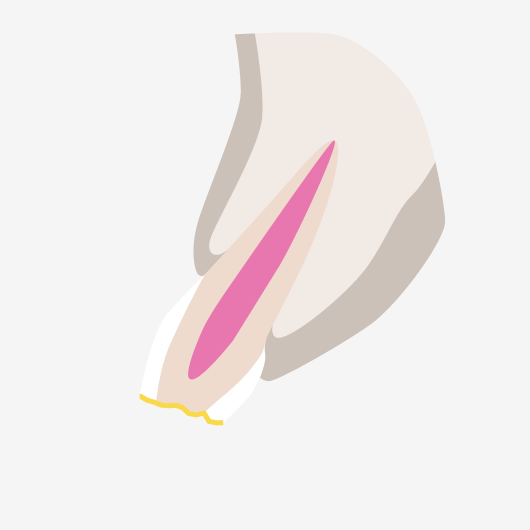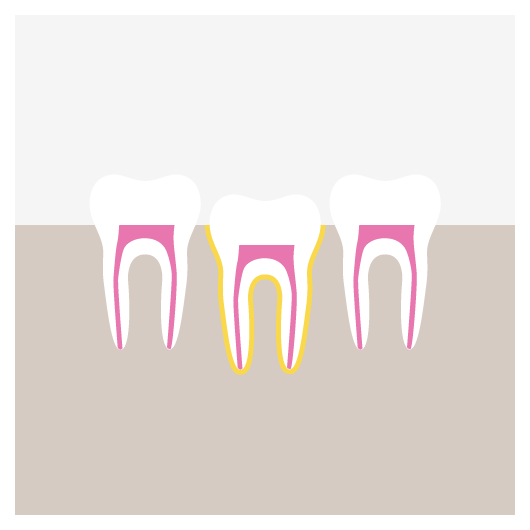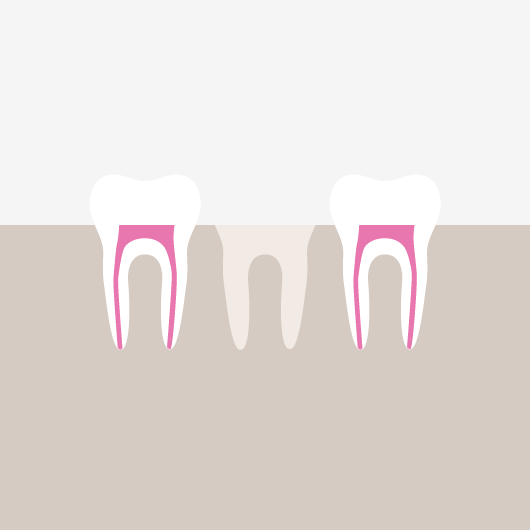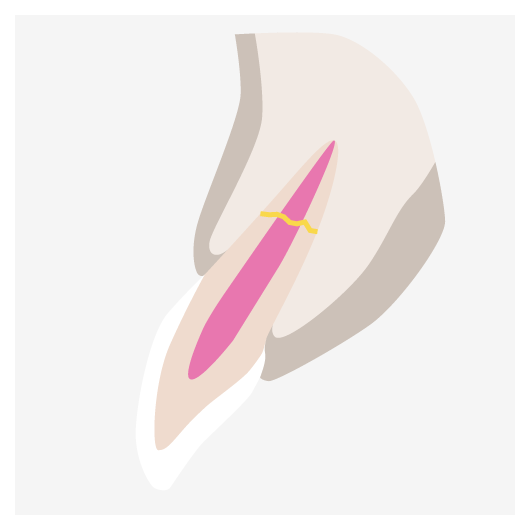

Most chipped or fractured tooth crowns can be repaired either by reattaching the broken piece or by placing a tooth-colored filling. If a significant portion of the tooth crown is broken off, an artificial crown or “cap,” may be needed to restore the tooth.
If the pulp is exposed or damaged after a crown fracture, root canal treatment may be needed. These injuries require special attention and it is important to seek professional help as soon after the injury as possible. Never use topical oral pain medications (such as Anbesol) or ointments, or place aspirin on the affected areas to eliminate pain symptoms.
Injuries in the back teeth often include fractured cusps, cracked teeth and the more serious split tooth. If cracks extend into the tooth, root canal treatment and a full coverage crown may be needed to restore function to the tooth. Split teeth may require extraction.
 Gum Tissue
Gum Tissue
 Pulp
Pulp
 Damage
Damage
 Dentin
Dentin

During an injury, a tooth may be pushed sideways, out of or into its socket. Your endodontist or general dentist will reposition and stabilize your tooth. Root canal treatment is usually needed for permanent teeth that have been dislodged and should be started a few days following the injury. Medication such as calcium hydroxide may be put inside the tooth as part of the root canal treatment. A permanent root canal filling will be placed at a later date.
 Gum Tissue
Gum Tissue
 Pulp
Pulp
 Damage
Damage

If a tooth is completely knocked out of your mouth, time is of the essence. The tooth should be handled very gently, avoiding touching the root surface itself. If it is dirty, quickly and gently rinse it in water. Do not use soap or any other cleaning agent, and never scrape or brush the tooth. If possible, the tooth should be placed back into the socked in the mouth as soon as possible. The less time the tooth is out of its socket, the better the chance for saving it.
Once the tooth has been put back in its socket, your endodontist will evaluate it and will check for any other dental and facial injuries. If the tooth has not been placed back into its socket, when appropriate, your endodontist will clean it carefully and replace it. A stabilizing splint will be placed for a few weeks. It is very important that root canal treatment be started within a couple of weeks after replantation.
 Gum Tissue
Gum Tissue
 Pulp
Pulp
 Missing Tooth
Missing Tooth

A traumatic injury to the tooth may result in a horizontal root fracture. After the diagnosis is made, the tooth will need to be repositioned if it has been displaced followed by placing a splint for a few weeks. Properly treated, teeth with horizontal root fractures usually have good prognosis.
 Gum Tissue
Gum Tissue
 Pulp
Pulp
 Damage
Damage
 Dentin
Dentin